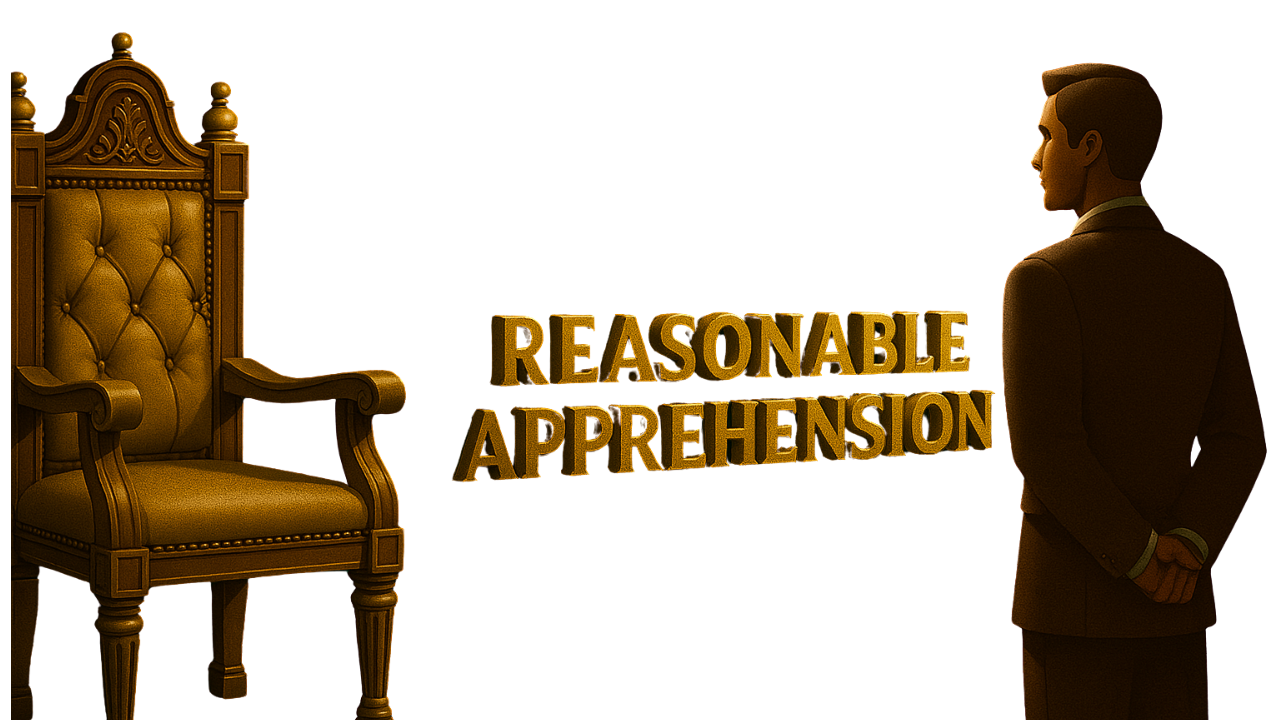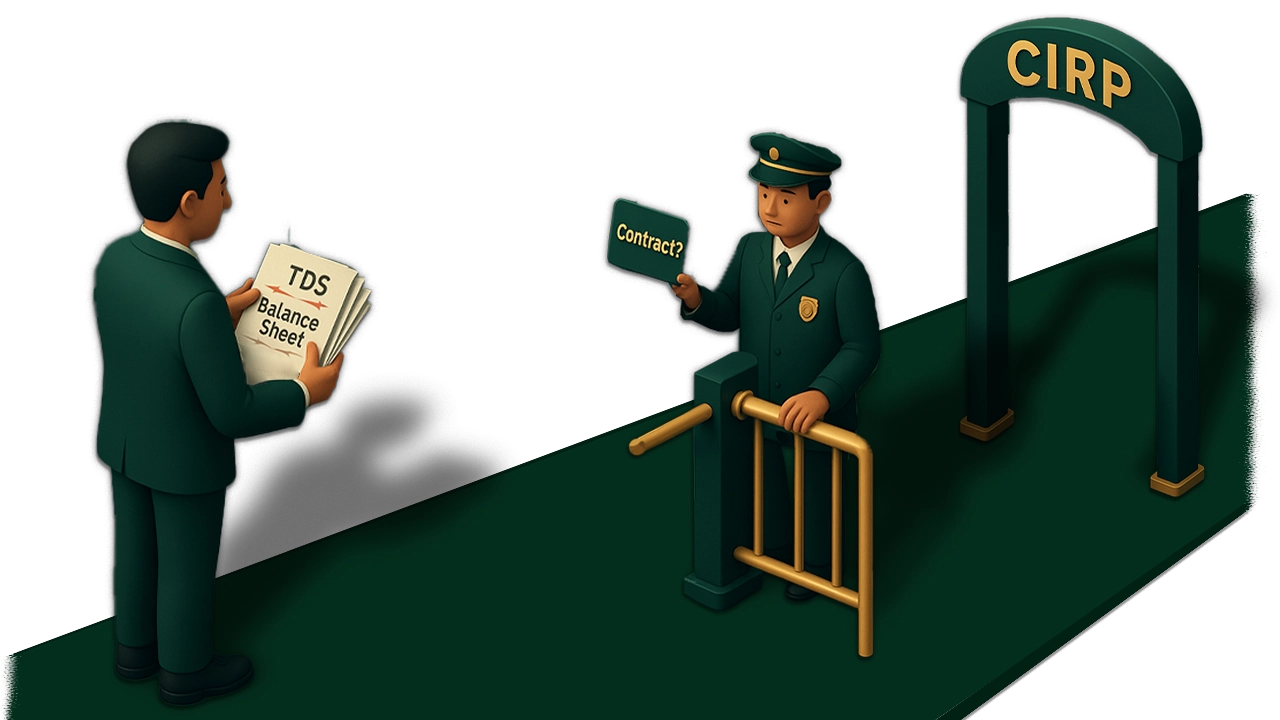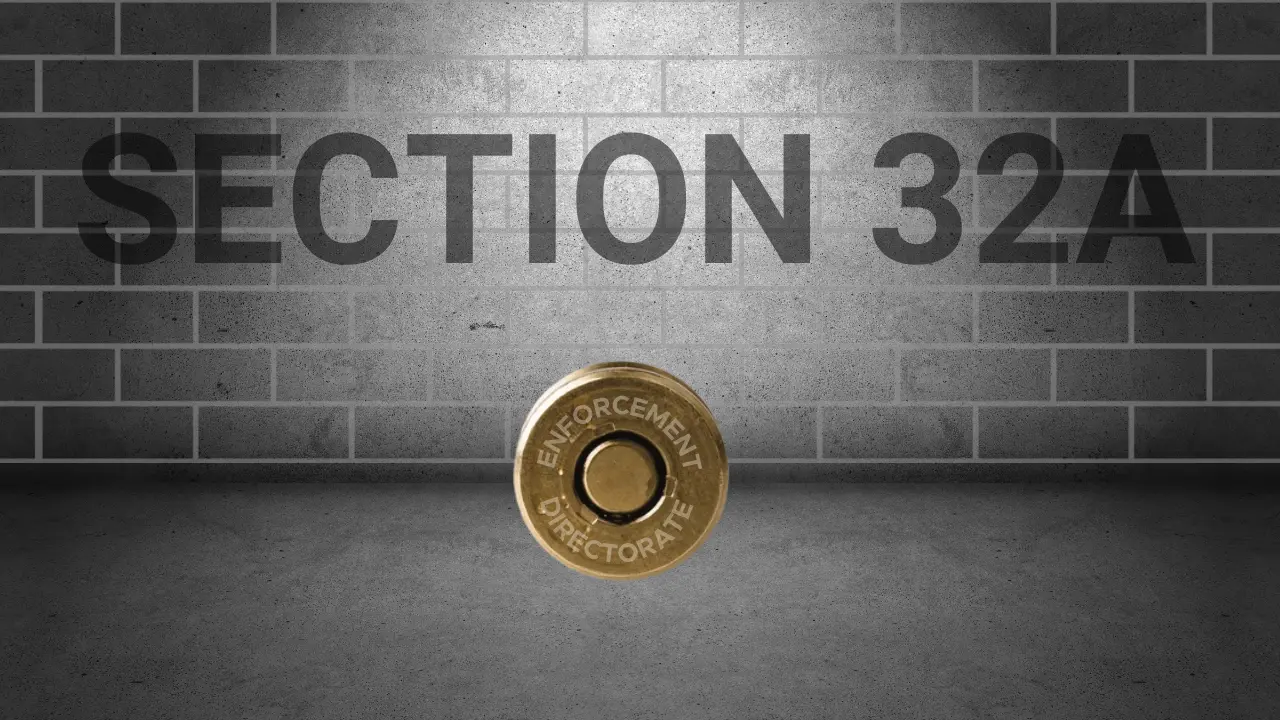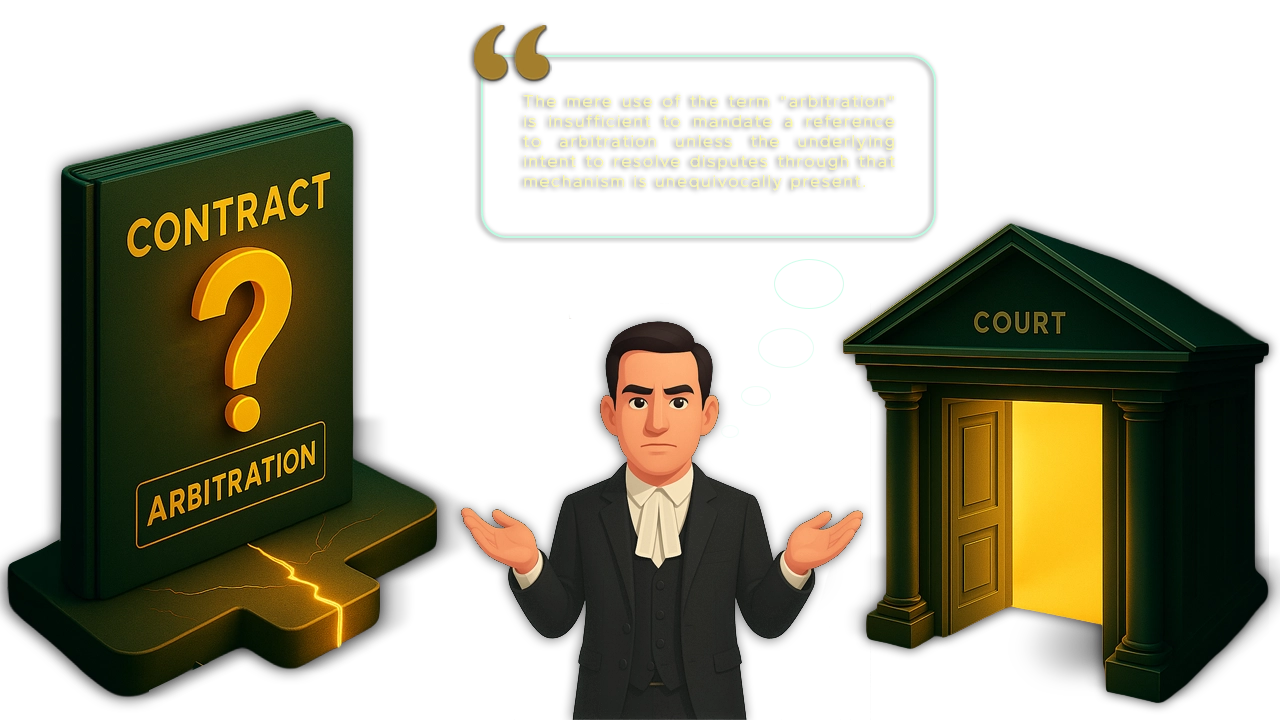Introduction
The hallowed halls of justice often echo with pronouncements that redefine the contours of legal interpretation, shaping the very fabric of dispute resolution. One such recent pronouncement from the Delhi High Court in Roshan Real Estates Pvt Ltd Versus Government Of Nct Of Delhi1 casts a long shadow over the appointment of arbitrators, particularly concerning past professional relationships. How far back in time can a connection stretch before it compromises the impartiality vital to arbitration? Can a relationship, seemingly dormant for nearly two decades, still awaken the specter of bias? This is precisely the nuanced question the court grappled with, ultimately holding that a past professional or supervisory relationship, even one existing 17 years prior, can indeed disqualify an individual from serving as an arbitrator if it creates a “reasonable apprehension of bias” under Entry 1 of the Seventh Schedule. The core issue before the Court was the eligibility of an arbitrator whose impartiality was called into question due to a relationship that, while distant in time, was deemed to still hold sway. This article will delve into the underlying judicial pronouncements which formed the basis for the present judgment, exploring its implications for arbitral appointments and the paramount importance of perceived neutrality in the arbitral process.
The heart of this matter lies in Sections 12(5) and 14(1)(a) of the Arbitration Act2, which, when read with Entry 1 of the Seventh Schedule, set forth the stringent criteria for an arbitrator’s eligibility. Section 12(5) unequivocally states that “any person whose relationship, with the parties or counsel or the subject-matter of the dispute, falls under any of the categories specified in the Seventh Schedule shall be ineligible to be appointed as an arbitrator,” subject only to a post-dispute express written waiver. Furthermore, Section 14(1)(a) mandates the termination of an arbitrator’s mandate if they become “de jure or de facto unable to perform his functions.” These provisions, inserted by the 2015 Amendment, were a deliberate legislative stride towards ensuring an impartial and independent arbitral process, safeguarding it from both real and perceived bias.
But what exactly constitutes such a disqualifying relationship? Entry 1 of the Seventh Schedule is remarkably explicit: “The arbitrator is an employee, consultant, advisor or has any other past or present business relationship with a party.” The Delhi High Court judgment critically examines the breadth of this entry, particularly the phrase “any other past or present business relationship.” Does this encompass professional associations that extend beyond direct employment or consultancy?
To unravel this, the Court turned to seminal Supreme Court pronouncements. The rulings in TRF Limited v. Energo Engineering Projects Ltd3. and Perkins Eastman Architects DPC & Ors. v. HSCC (India) Ltd4. were pivotal. As Perkins Eastman eloquently articulated, drawing from TRF Limited, the fundamental principle is that “a person having an interest in the dispute or in the outcome or decision thereof, must not only be ineligible to act as an arbitrator but must also not be eligible to appoint anyone else as an arbitrator.” The essence of the 2015 amendments, as recognized by these judgments, is to prevent any individual with an inherent interest in the dispute’s outcome from influencing the dispute resolution process, especially in scenarios where one party unilaterally holds the power to appoint a sole arbitrator. This underscores the legislative intent: to eliminate even the potential for bias.
The judgment also drew strength from Voestalpine Schienen GMBH v. Delhi Metro Rail Corporation Ltd. This case, while addressing the need for broad-based arbitral panels, significantly underscored the “importance of appointing arbitrators who inspire confidence in their neutrality.” The Supreme Court in Voestalpine emphasized that panels should not be “drawn solely from the same institutional framework as one of the parties,” thereby reinforcing the critical role of perceived impartiality, particularly in government contracts where one party is a state entity. This prompts a crucial question: If the very composition of a panel can raise doubts, how much more potent is a direct past supervisory relationship with one of the parties?
Further reinforcing these principles, the Delhi High Court itself, in Proddatur Cable TV DIGI Service v. Citi Cable Network Limited5 and Govind Singh v. M/s. Satluj Jal Vidyut Nigam Ltd6., consistently held that a past or present association can indeed create a “valid perception of bias” and lead to disqualification under Section 12(5). These judgments affirm that the statutory ineligibility, as outlined in the Seventh Schedule, is not a mere formality but a fundamental safeguard against compromise of the arbitral process.
The respondent, in the present case, attempted to find solace in Government of Haryana PWD (B&R) Branch v. G.F. Toll Road Private Limited7, arguing that the word “other” in Entry 1 of the Seventh Schedule could not be used to broaden its scope to include past/former employees. However, the Delhi High Court skillfully distinguished this precedent. The Government of Haryana case, it noted, was rendered in the pre-2015 amendment era and specifically concerned a “former employee without any business/professional relationship.” This crucial distinction highlights that the legislative intent behind the 2015 amendments, particularly Entry 1, was to encompass a wider range of relationships that could engender a reasonable apprehension of bias, beyond just direct employment. The emphasis shifts from the nature of the role to the impact of the relationship on perceived impartiality.
The Court meticulously considered the specific facts: the appointed arbitrator had a past professional association as a Superintending Engineer in CPWD, supervising projects executed by the petitioner. While the respondent argued this supervision was over 17 years ago and not day-to-day, the Court found that the existence of a “business, professional and supervisory relationship” itself was sufficient. The legislative intent behind Entry 1, the Court clarified, “does not hinge upon the nature or the duration of such business relationship, but rather focuses on whether the existence of such association may reasonably create a perception of partiality.” This directly addresses the “reasonable apprehension of bias” test, concluding that such a past supervisory role inherently gives rise to it.
Crucially, the Court also observed the respondent’s own prior conduct in a similar dispute, where they had withdrawn the same arbitrator’s appointment due to similar objections from the petitioner. This, the Court reasoned, demonstrated the respondent’s “own recognition that the appointment of Mr. B.B. Dhar could give rise to an apprehension of bias.” The Court’s original appointment of the arbitrator under Section 11(6) was made without knowledge of these critical facts, a detail that now came to light and triggered the disqualification.
Finally, the judgment reiterated the Supreme Court’s clarification in HRD Corporation v. GAIL (India)8 Limited that an arbitrator’s mandate can be terminated under Section 14 if facts indicating ineligibility or bias subsequently emerge. This underscores that statutory ineligibility under the Seventh Schedule is de jure and renders the arbitrator legally incapable of continuing, irrespective of a court appointment under Section 11. The submission of a Section 12(1) declaration, too, does not cure a statutory disqualification, nor does mere silence or acquiescence in the absence of an express post-dispute written waiver.
Conclusion
The Delhi High Court’s pronouncement marks a significant reinforcement of the principles of independence and impartiality, cornerstones of a credible arbitration system. By emphasizing that a “reasonable apprehension of bias” can arise even from professional relationships spanning nearly two decades, the judgment sends a clear message: the passage of time does not automatically erase the potential for perceived influence. It underscores that the legislative intent behind the 2015 amendments and the Seventh Schedule was to create a robust firewall against any circumstance that could even suggest a lack of neutrality, moving beyond mere actual bias to encompass the vital perception of fairness.
The implications of this ruling are far-reaching for arbitral appointments in India. It will necessitate a more rigorous and transparent disclosure process from prospective arbitrators, compelling them to delve deeper into their past professional engagements, irrespective of how distant they may seem. Parties, too, will be encouraged to conduct more thorough due diligence on proposed arbitrators, actively scrutinizing their historical ties to ensure compliance with the spirit, and not just the letter, of the Seventh Schedule. This heightened scrutiny aims to bolster confidence in the arbitral process, making it truly an effective and trusted alternative dispute resolution mechanism.
However, this nuanced interpretation also opens up new avenues for deliberation. While the judgment rightly prioritizes perceived neutrality, a pertinent question for the future might be: how will courts balance the stringent requirement of “reasonable apprehension of bias” with the practical need to draw arbitrators from a pool of experienced professionals who inevitably have extensive past associations? Will this lead to an overzealous application of the rule, potentially narrowing the pool of eligible and competent arbitrators, or will it foster a more judicious and context-specific evaluation of past relationships, ensuring that only those truly creating a genuine risk of bias lead to disqualification?
Citations
- Roshan Real Estates Pvt Ltd Versus Government Of Nct Of Delhi O.M.P.(T)(COMM.) 23/2025
- Arbitration and Conciliation Act,1996
- TRF Limited v. Energo Engineering Projects Limited, (2017) 8 SCC 377
- Perkins Eastman Architects DCP & Anr. v. HSCC (India) Limited, (2020) 20 SCC 760
- Proddatur Cable TV DIGI Service v. SITI Cable Network Limited, 2020:DHC:354
- Govind Singh v. M/s Satya Group Private Limited & Anr., 2023:DHC:81-DB
- Government of Haryana PWD Haryana (B and R) Branch v. G.F. Toll Road Private Limited & Ors., (2019) 3 SCC 505,
- HRD Corporation (Marcus Oil and Chemical Division) v. GAIL (India) Limited (Formerly Gas Authority of India Limited), (2018) 12 SCC 471
Expositor(S): Adv. Anuja Pandit






